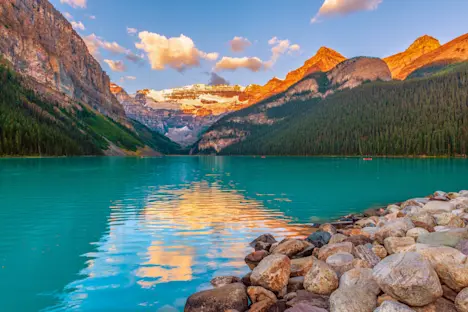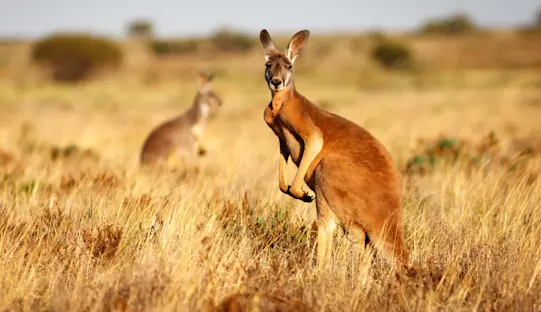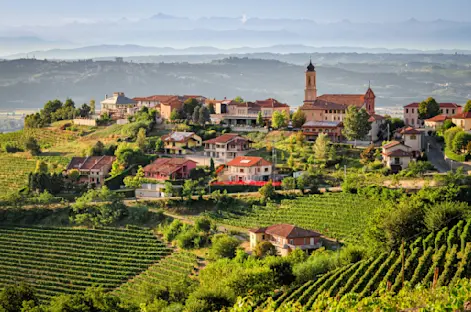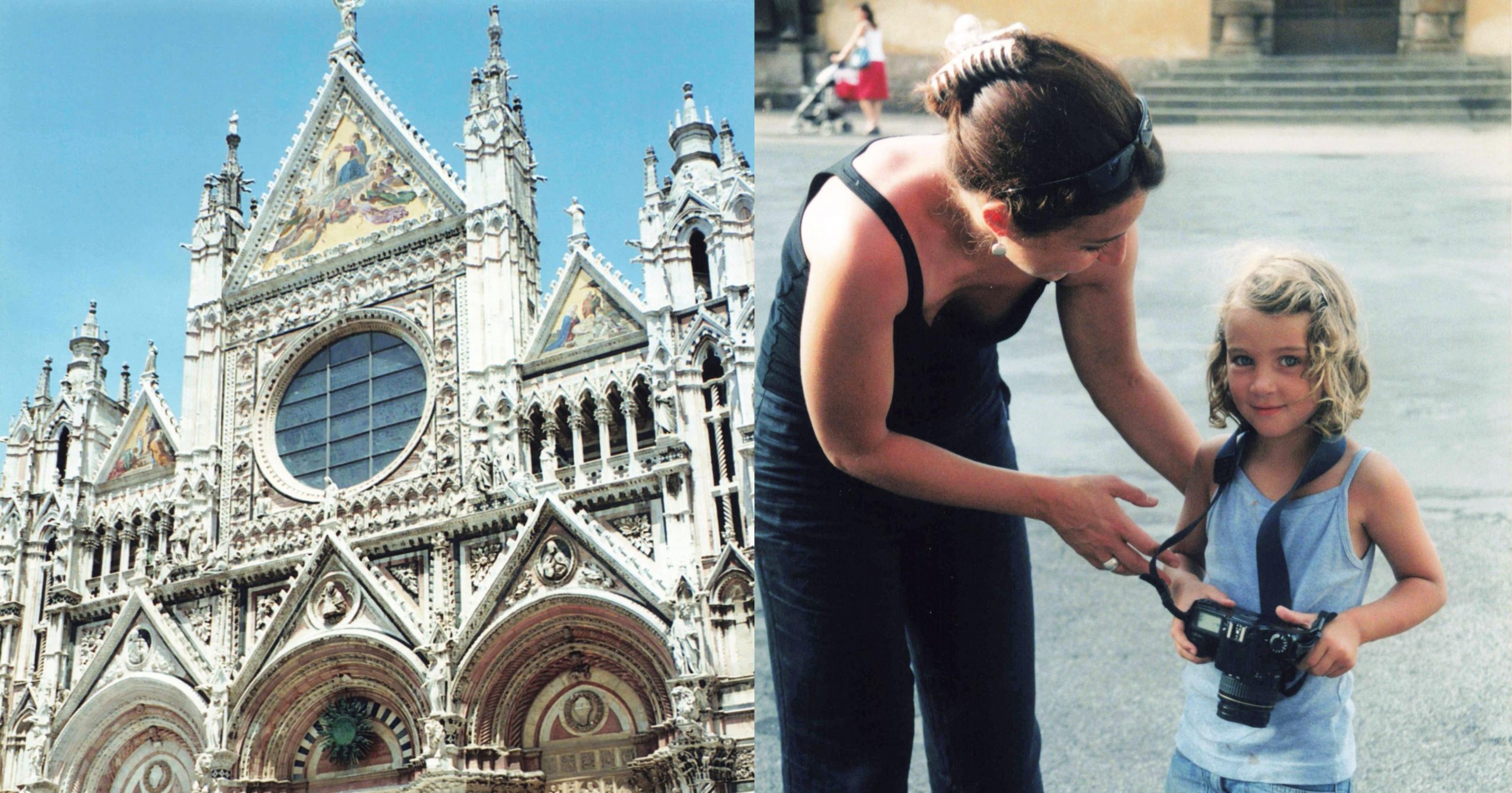The summer of 2003 was sweltering across Europe. I was seven years old, about to turn eight, when my family and two others flew to Italy and settled into a villa tucked deep in the Tuscan countryside. It was my first trip abroad and the heat wave made even the air feel heavy. Our salvation was the pool. My friend Valentina and I spent hours in the water with pool noodles, inventing games of seahorses and mermaids.
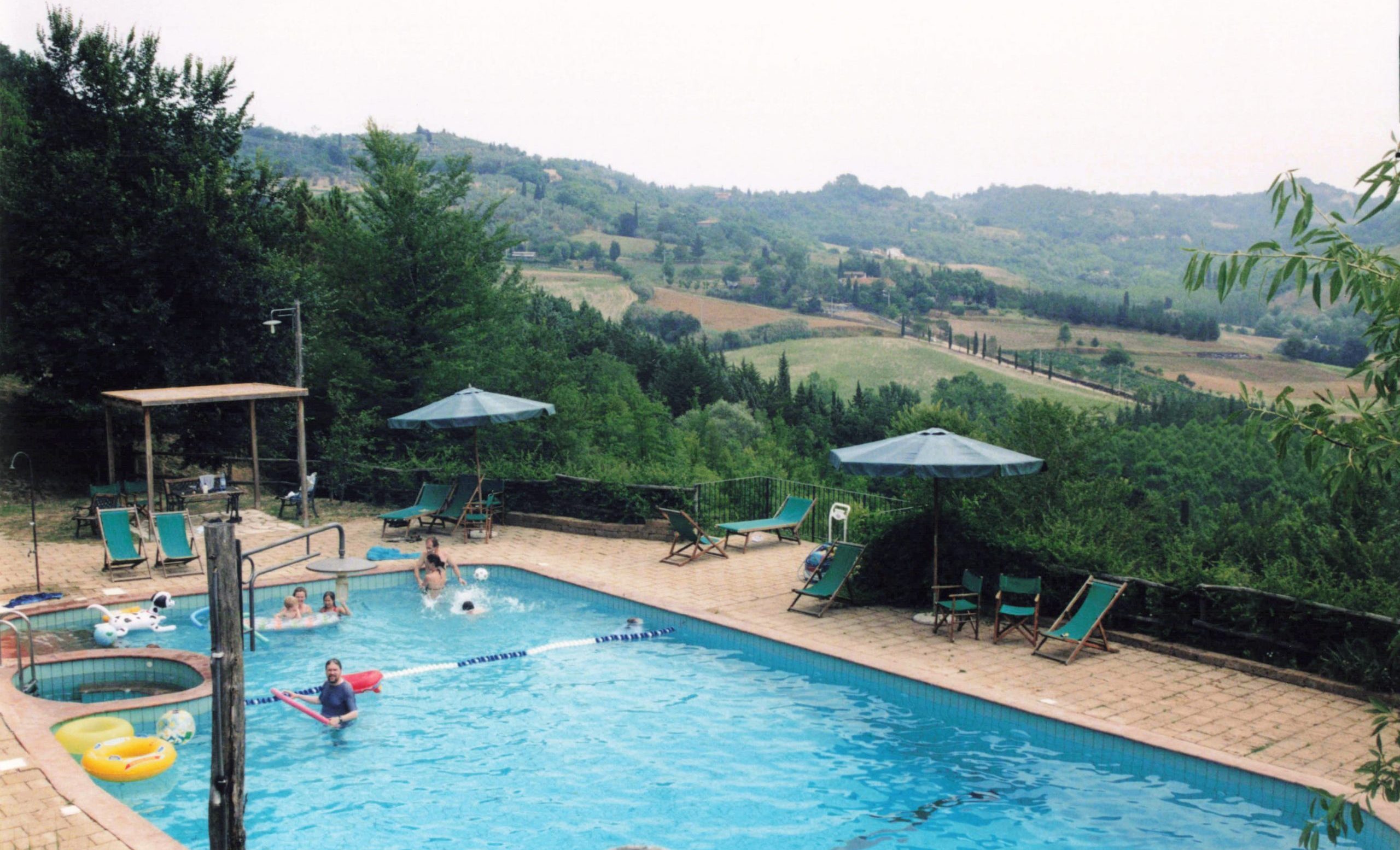
Looking back, I realize that trip carried so many milestones for me. It was the first and only time I left North America until I was 13. It was also when I discovered the pure joy of Italian cuisine. One night, the villa’s owner prepared pizzas in the wood-fired stone oven beneath a canopy of stars. I can still recall the thin crust with tomatoes blistered by flame and salty, melted mozzarella pooling at the center. That starlit dinner was more than a meal—it was the spark that ignited my love for food and travel.
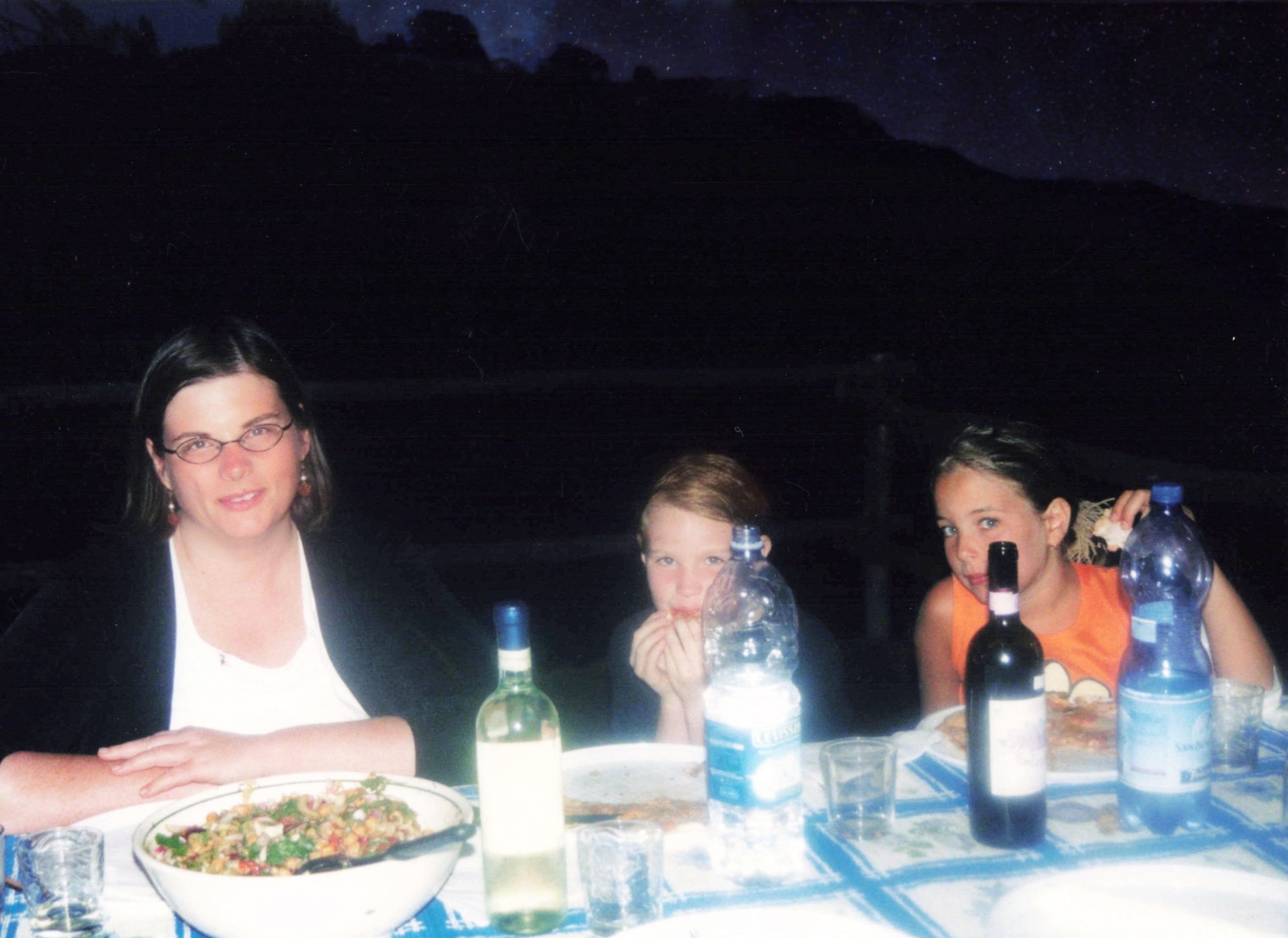
Trying my first delicious bite of pizza from the outdoor wood-fired oven with Valentina and my mom.
Today, our Tuscany: La Dolce Vita journey offers travelers that same magic—villa stays, vineyard lunches and the flavors that first sparked my love for Italy.
Siena and Surroundings
Our villa sat near Castelfalfi, a medieval hamlet where I collected shiny snail shells along stone paths. During breaks in the heat, we would head to nearby Siena, which captured my imagination. We climbed 500 steps up the tower of the Palazzo Pubblico, which offered a panorama of the city below. I entered Siena Cathedral, with its striking marble in black and white stripes, to find works by Michelangelo. In the streets, I noticed details that remain etched in memory: ancient iron-studded doors, laundry strung to dry and fish-shaped lanterns hanging above the colorful flags of Siena’s 17 contrade (districts), proudly flown in anticipation of July’s Palio, a centuries-old bareback horse race.
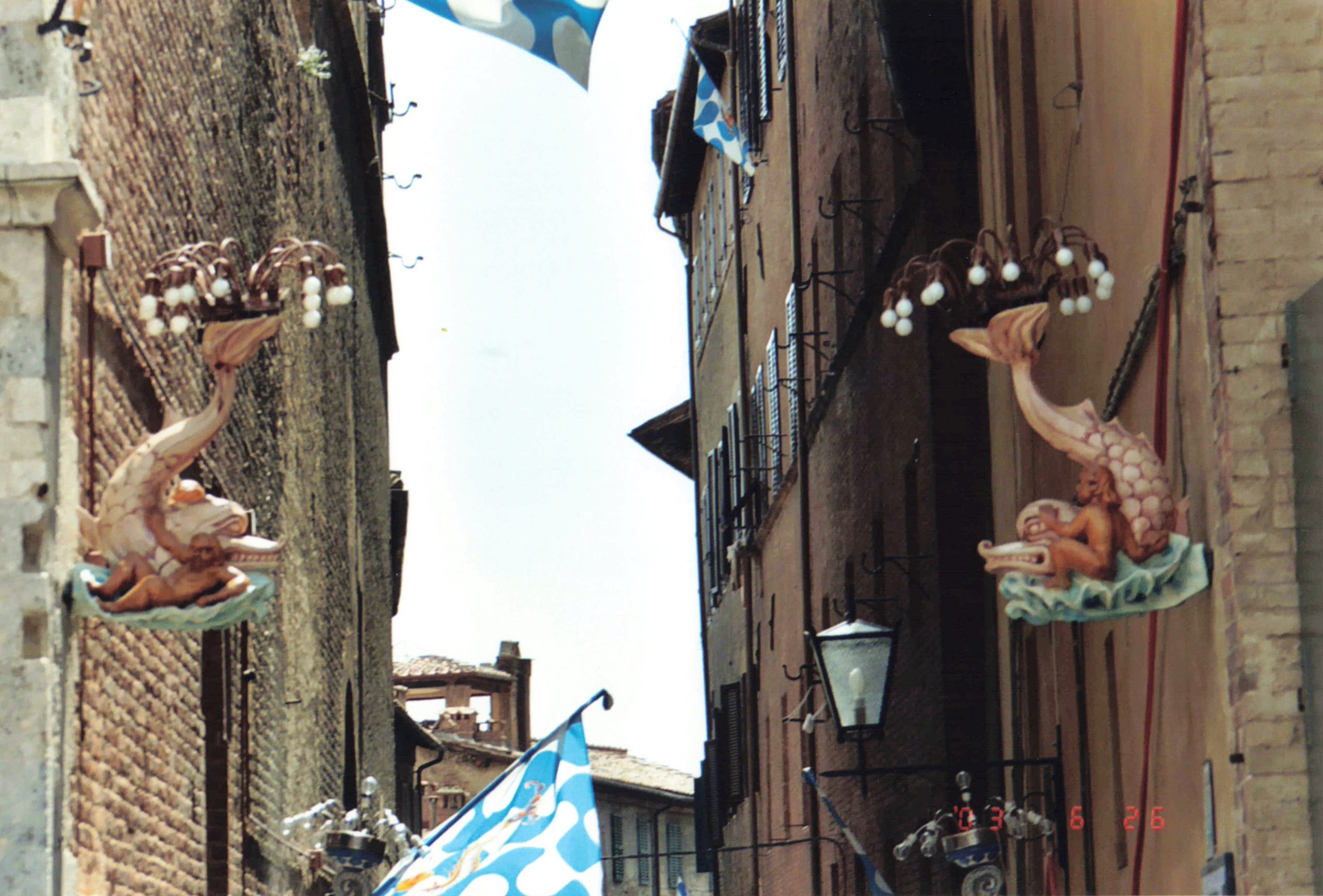
The Piazza del Campo, Siena’s great shell-shaped square, unfolded as both gathering place and history lesson. Under Medici rule, the piazza became the stage for elaborate festivals and public spectacles like the Palio, a tradition that continues to animate Siena today. Siena is a UNESCO World Heritage Site, a medieval city preserved almost intact. That first glimpse planted a seed: in time, it would grow into a passion for visiting more than 100 UNESCO sites around the world and inspire my cultural anthropology major.
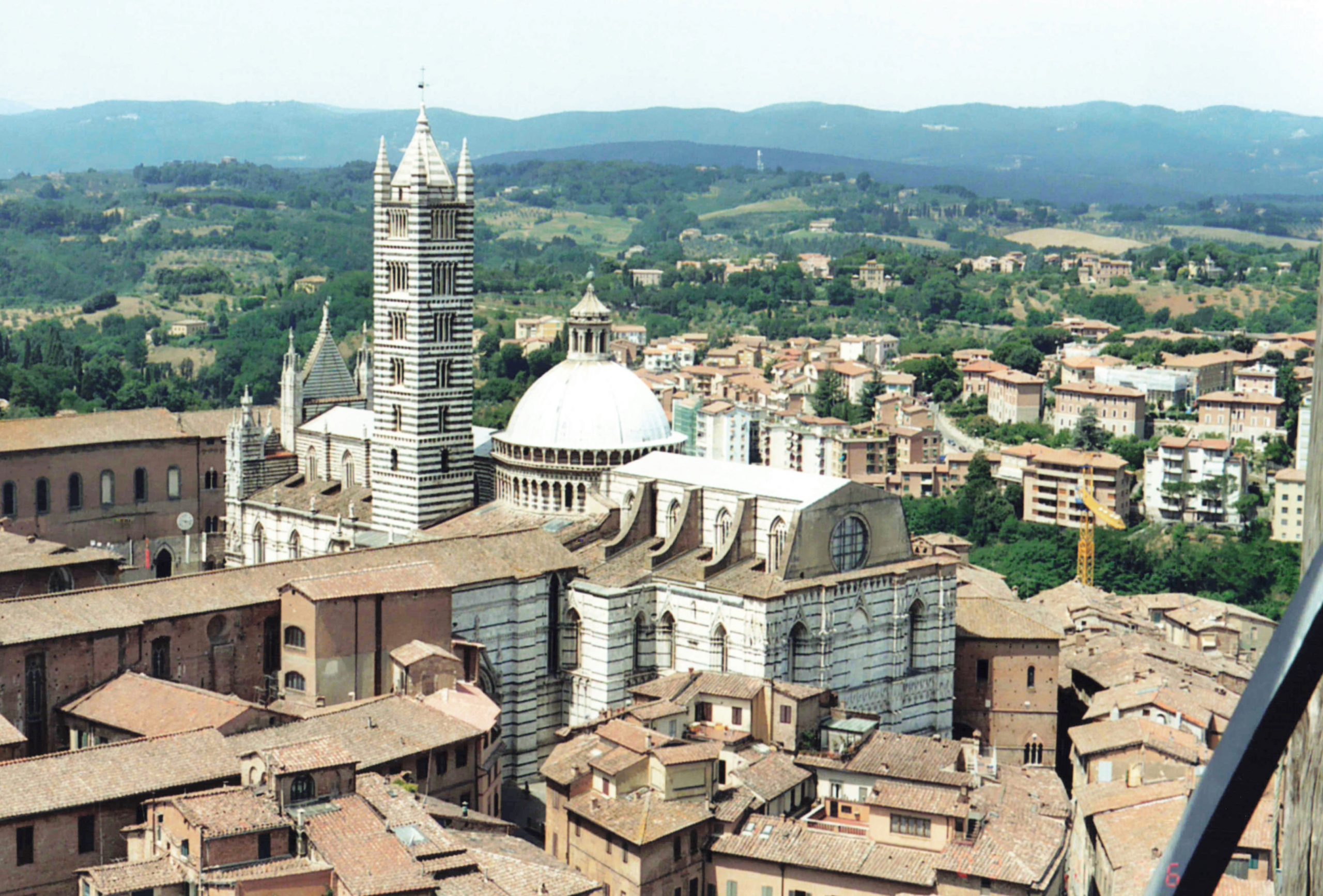
Siena Cathedral rising above medieval houses.
We also visited San Gimignano, famous for its towers—once seventy-two in number, fourteen remain. I was fascinated to learn how families lived inside them: workshops at street level, bedrooms above, kitchens at the top where fire hazards were least dangerous. I wandered into the Piazza della Cisterna, where a fairytale well, medieval houses with old wooden shutters and gargoyles perched on churches felt like characters in their own story.
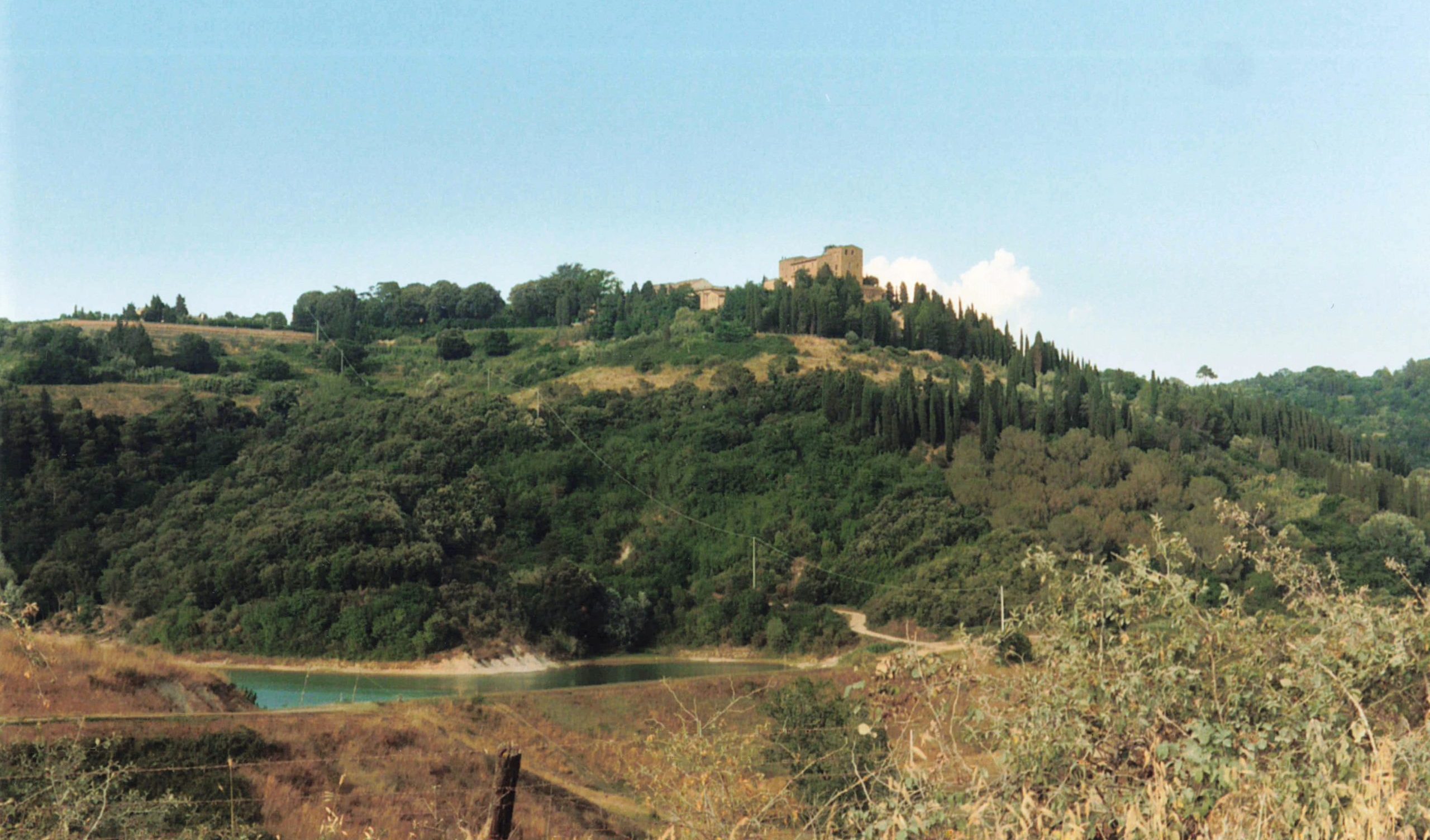
The winding road to our villa.
Birthdays were celebrated at the villa, olive oil was poured fresh from the grove outside and every day offered another vista of rolling hills punctuated by cypress colonnades. At seven years old, I didn’t yet have the vocabulary to articulate what Tuscany meant to me—something alive yet ancient—but I knew it was special.
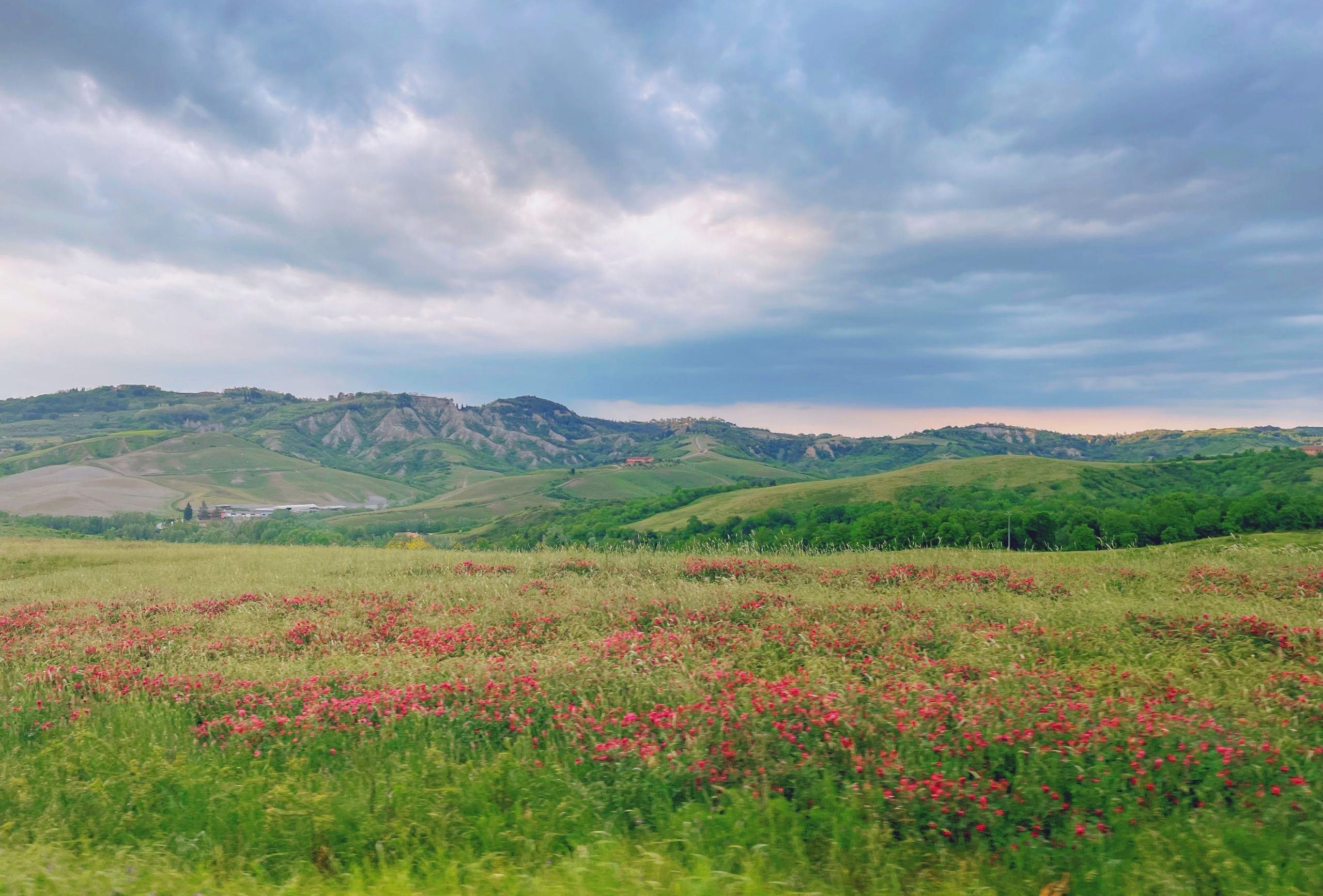
Returning to Tuscany
Two decades later, in May 2023, I returned to Tuscany with my husband James and extended family. The trip was part of a longer journey: after a honeymoon exploring the Amalfi Coast and islands of Procida and Capri, we met relatives in Liguria, visiting the cliffside towns of Cinque Terre and Portofino, before heading to the Tuscan countryside. Our time in Tuscany was marked by rainy skies rather than summer heat. In Florence and San Gimignano, showers turned the streets slick, purplish-blue clouds rising above emerald hills. Rain changed the rhythm of the trip. Tourists thinned, streets emptied and towns revealed themselves in quieter ways.
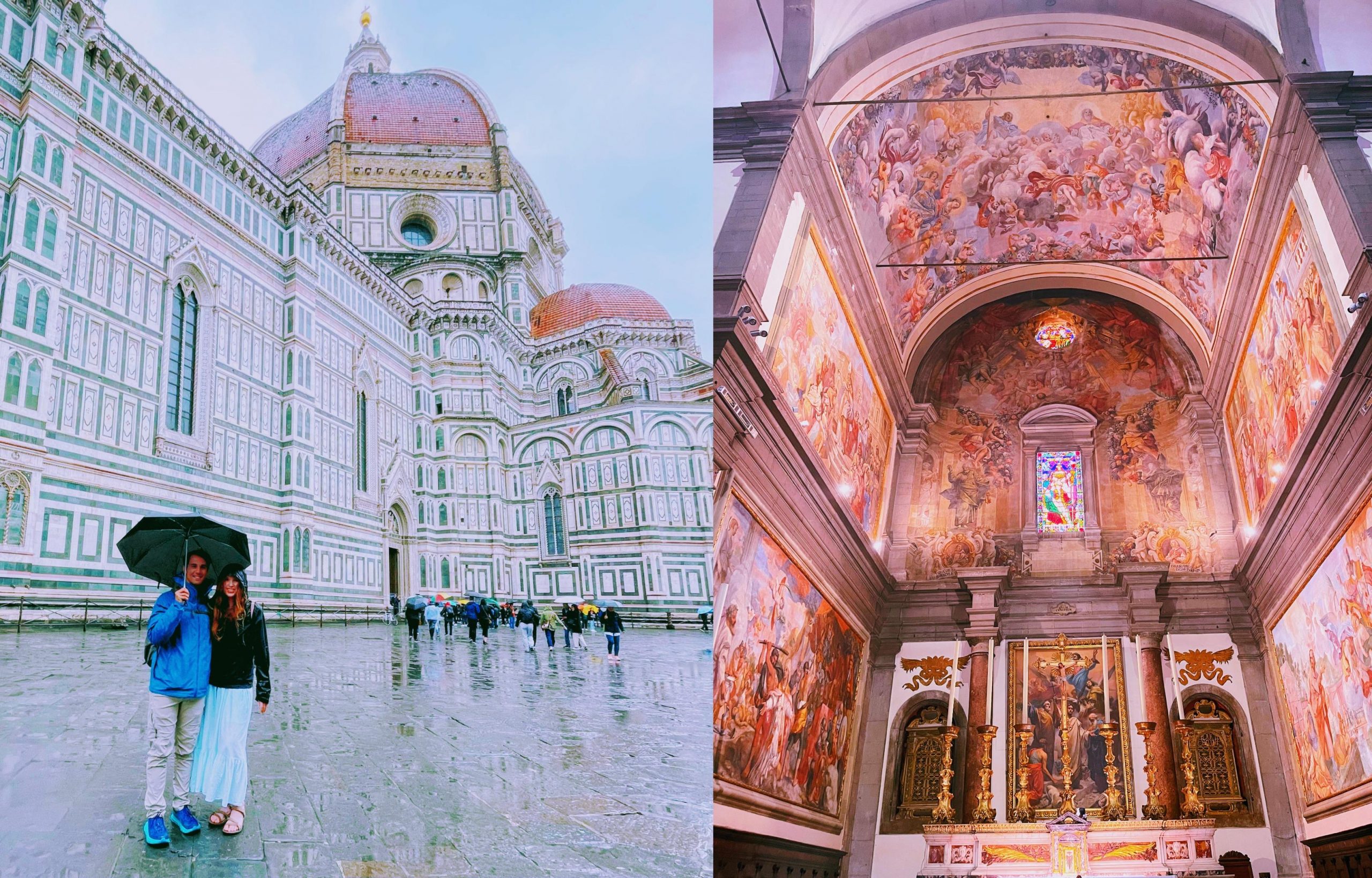
From peasant soups cooked slowly in Chianti bottles to Renaissance cathedrals gilded with frescoes, Tuscany embodies continuity. Its UNESCO World Heritage Sites are not museums but communities that still pulse with life, each season offering its own feast. I have been lucky to explore the UNESCO treasures of Florence, Siena, San Gimignano, Pisa and Val d’Orcia—I can’t wait to return to see more!
Florence: The Cradle of the Renaissance
Florence greeted us with grandeur. The Duomo, with its red-tiled cupola by Brunelleschi, pink, green and white marble facade and soaring interior, stood as a reminder of the city’s Renaissance genius. We passed the Baptistery, pausing at the gilded Gates of Paradise, and crossed the Ponte Vecchio, its bridge lined with jewelers selling glittering rings and carved cameos.
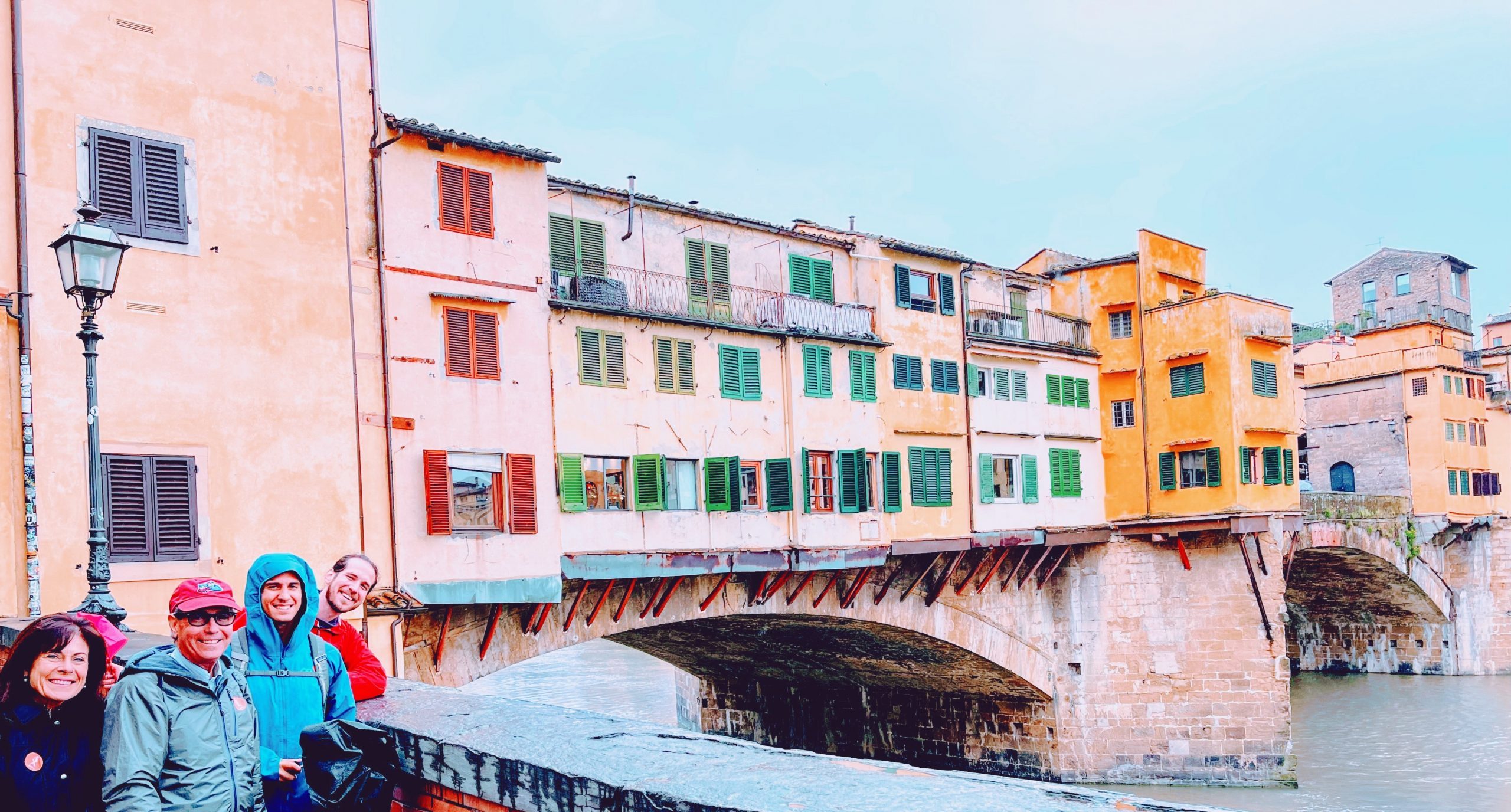
In the Piazza della Signoria, Neptune presided over his fountain, a Roman sea god set amid Renaissance stone, while nearby the Palazzo Vecchio rose as a reminder of Florence’s devotion to myth, beauty and civic pride.
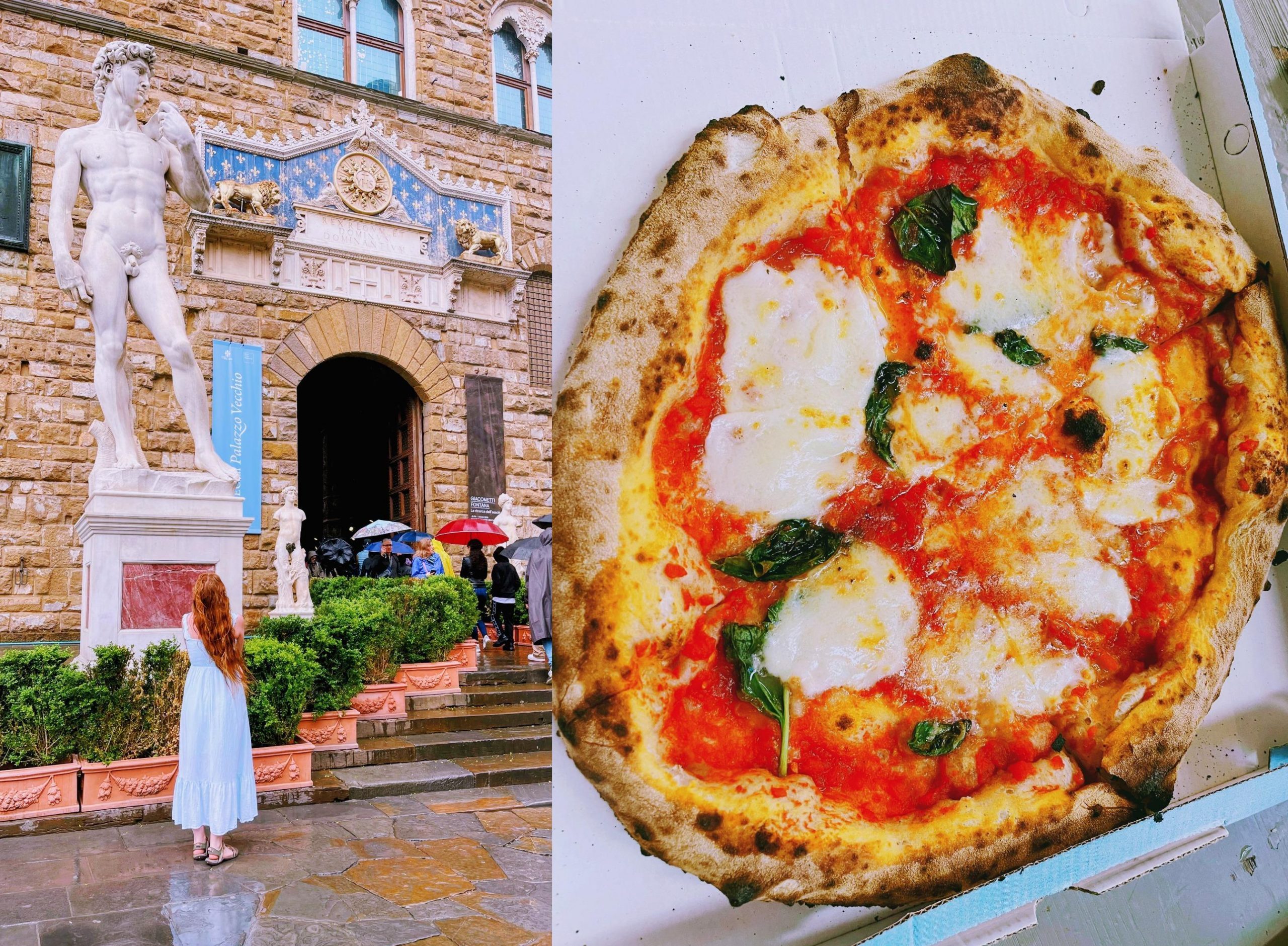
We ducked into the Mercato Centrale, Florence’s bustling food hall, where I was drawn to a childhood favorite—wood-fired Neapolitan pizza—while James tried a cannoli filled with ricotta and candied orange (how could an Italian Jersey boy resist?). Focaccias in endless varieties lined the stalls. Florence, as always, was both a city of art and appetite.
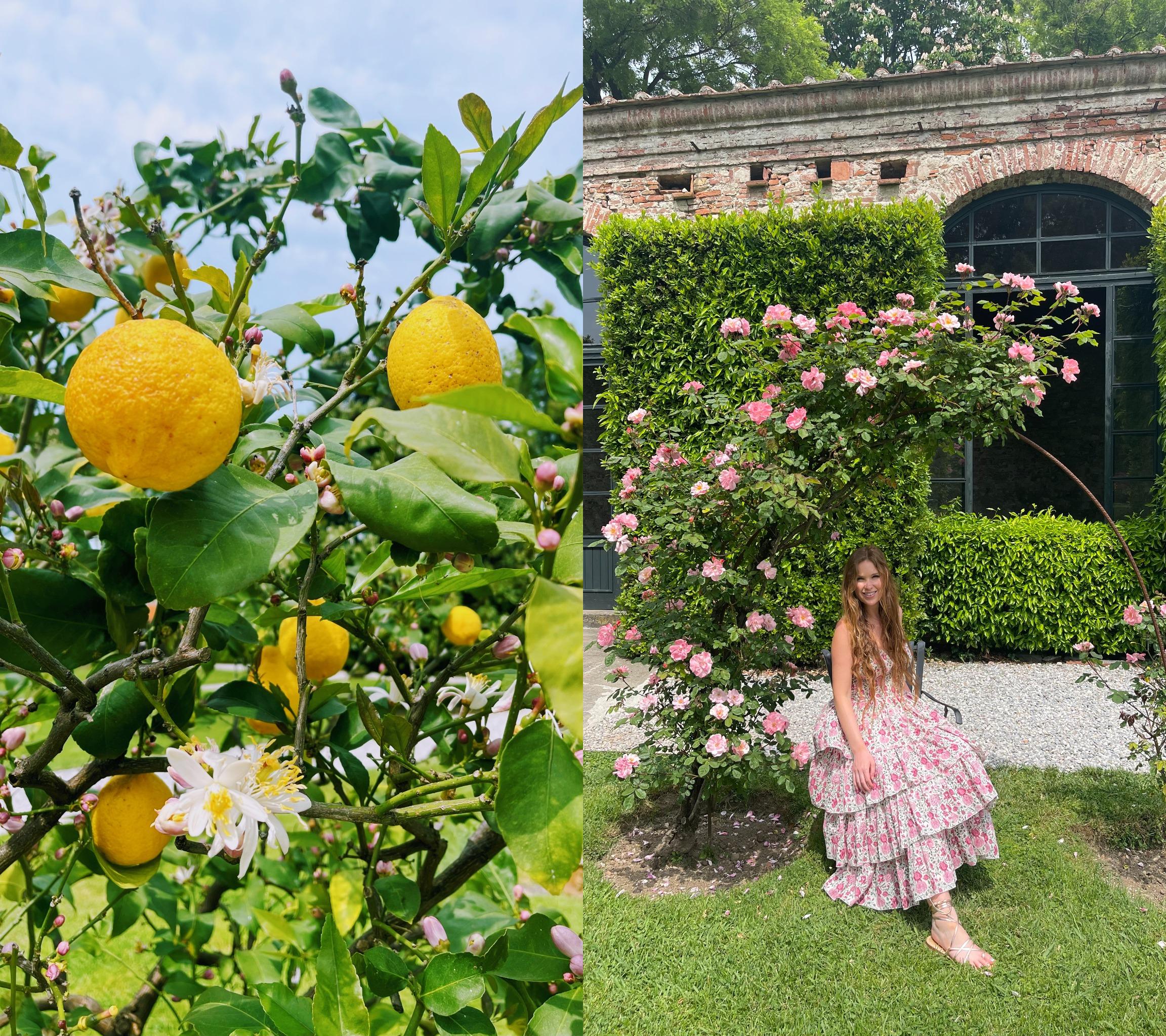
Lucca: A City Within Walls
But it was Lucca that charmed us most. This medieval walled town welcomed us through its tunnels into a world of towers, churches and gardens. At the Basilica of Saints Paolino and Donato, we admired Renaissance detail. The Basilica of San Michele rose with its Romanesque facade, while nearby a statue of Giacomo Puccini reminded us of Lucca’s musical legacy. We tasted the city in its food: cecina, a crisp chickpea pancake, topped with baby zucchini and squash blossoms, along with gelato flavored with lemon and the herbal notes of basil. Centuries-old cedar trees stood sentinel over the historic center, and in a garden of citrus and roses, we found solitude. Lucca was a place where beauty lived not only in architecture but in quiet corners.
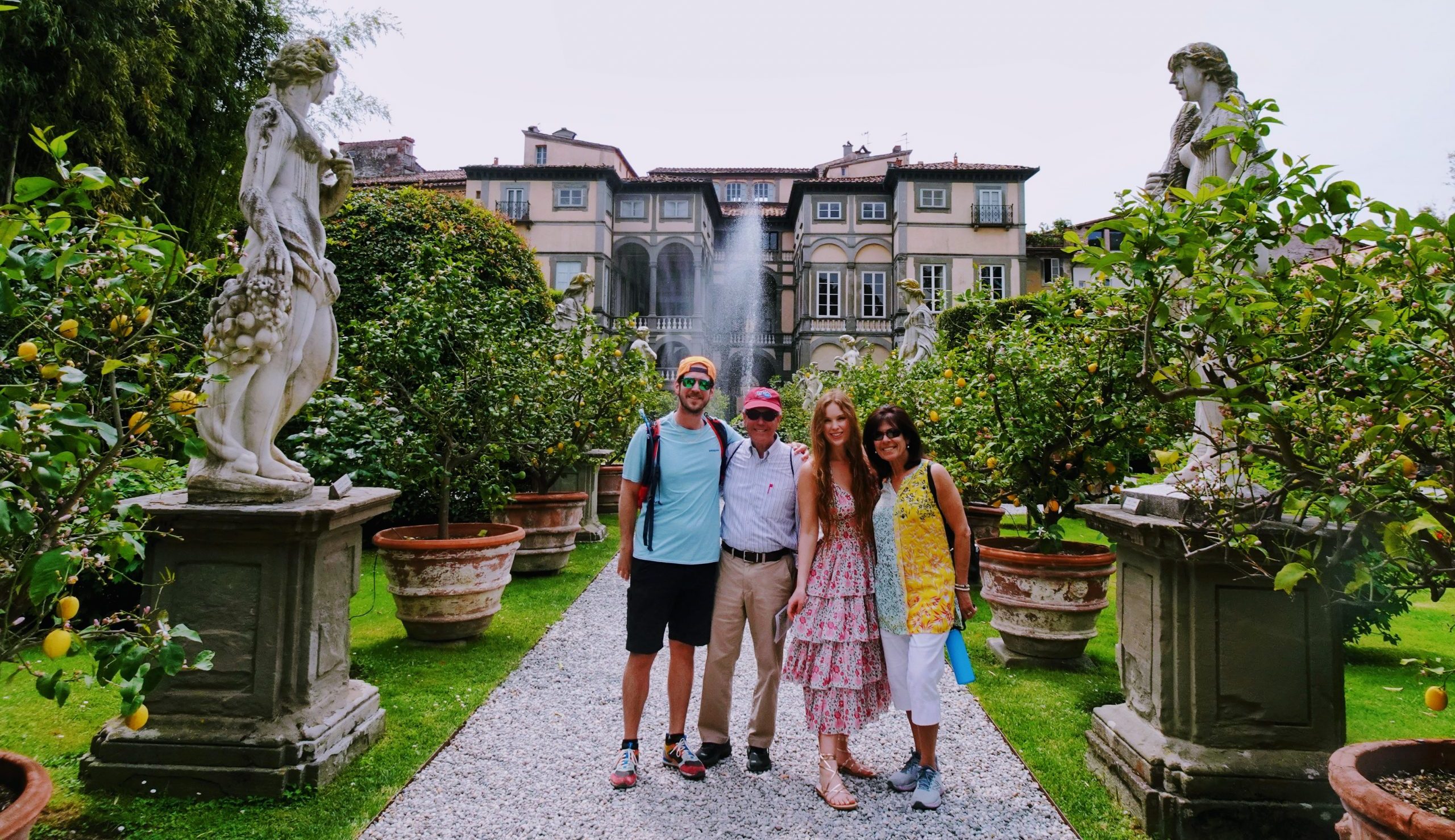
With my mother-in-law, father-in-law and brother-in-law at Palazzo Pfanner, an elegant Renaissance villa in Lucca dating to the 1660s. In its Baroque garden stands a statue of Amphitrite, goddess of the sea and bride of Poseidon, riding a shell-shaped chariot drawn by dolphins.
San Gimignano: Towers in the Rain
In San Gimignano, rain fell steadily, softening the medieval outlines of its fourteen towers. We stepped inside the Collegiata di Santa Maria Assunta, its 12th-century Romanesque interior glowing with frescoes across painted ceilings. Later, in the cellar restaurant La Bottega, we warmed ourselves with bowls of ribollita, the hearty bread-and-bean soup that embodies Tuscan peasant tradition. My main course was a perfect cacio e pepe, paired with a glass of Vernaccia di San Gimignano, the white wine for which the town is famous.
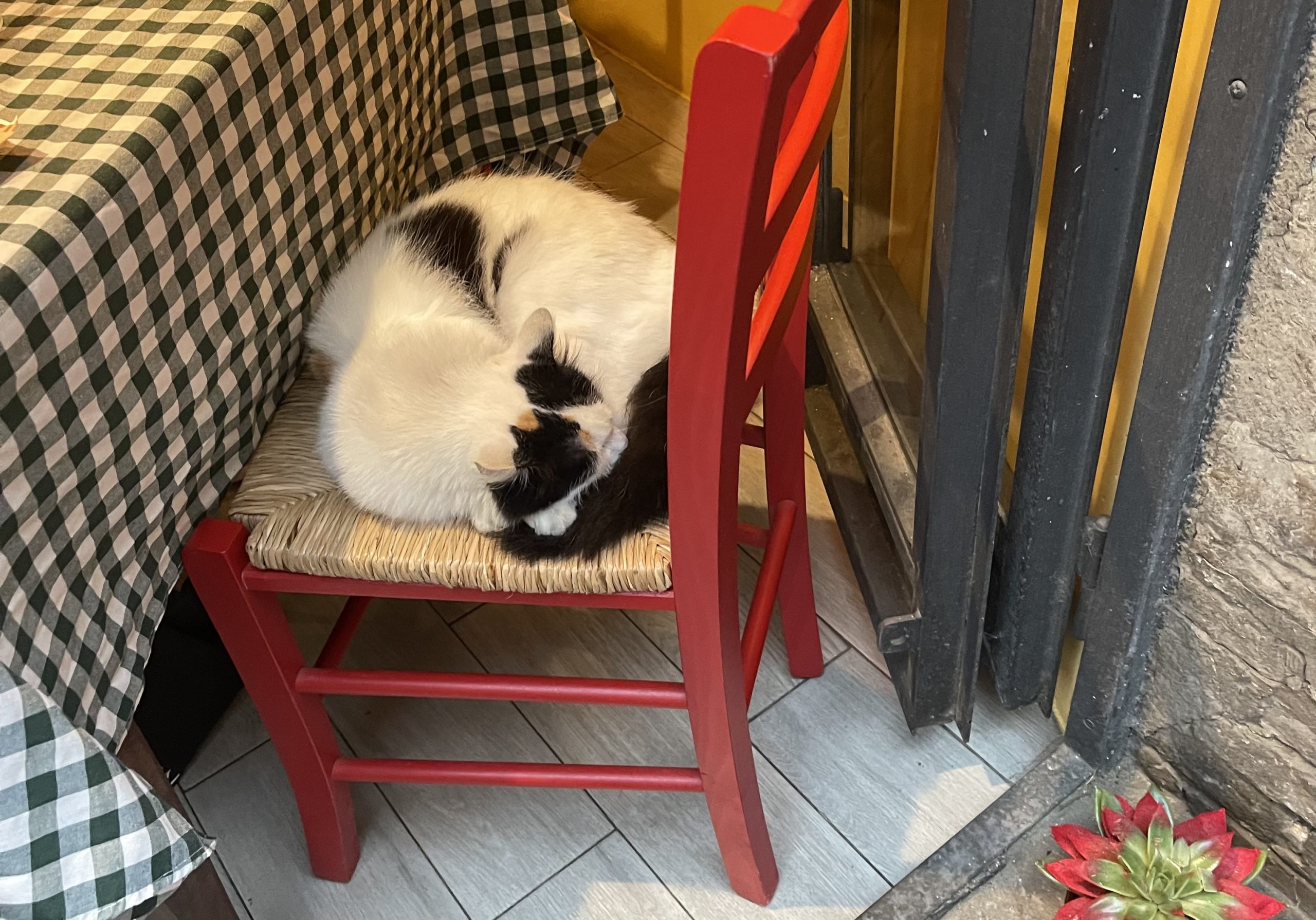
When we emerged, umbrellas in hand, the town was nearly deserted. Cats curled up on chairs beneath checkered tablecloths at open-air restaurants, watchful from their dry perches, while the medieval towers loomed against the stormy sky like silent sentinels of the feuding families who once measured power by height. That day, San Gimignano belonged almost entirely to us—a rare, rainy gift.
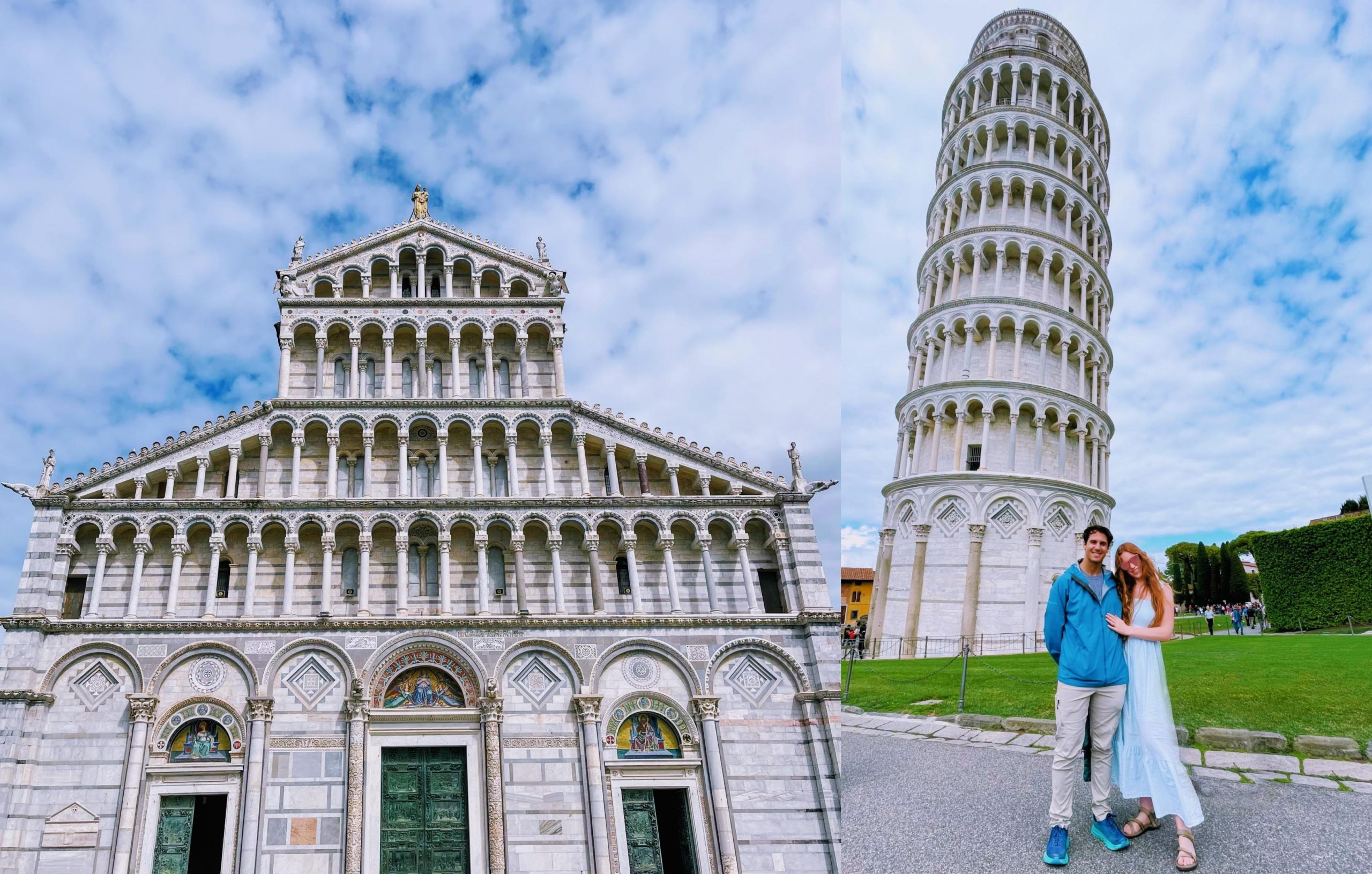
We also visited Pisa, beginning with the Piazza del Duomo. Here stood the Romanesque marble monuments of the Cathedral of Santa Maria Assunta, consecrated in 1118, alongside the Baptistery and the famous Leaning Tower.
Tuscany, Then and Now
As a child, Tuscany in the summer heat gave me my first taste of travel, family memories and the thrill of discovering food as a window into culture. In my 20s, Tuscany in the spring rain gave me new layers—the joy of sharing beloved places with my husband and long meals with newer family members. The games in the pool with Valentina and the starlit pizza dinner belonged to childhood, while ribollita in a candlelit cellar and quiet walks through rain-drenched alleys belonged to adulthood. But both trips affirmed what Tuscans themselves know well: to live fully is to savor season, place and company.
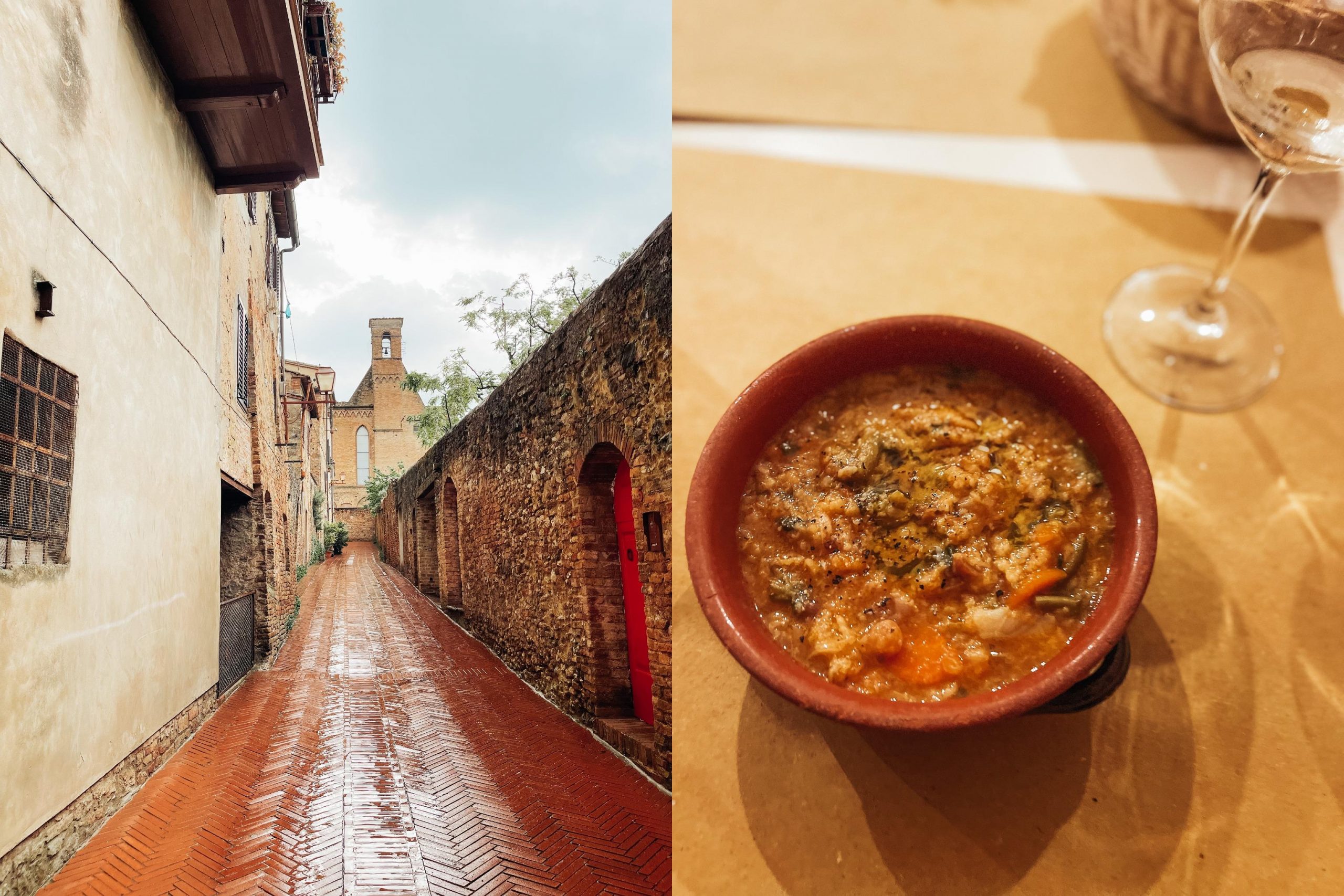
On our Tuscany: La Dolce Vita adventure, you’ll step into these same rhythms—tasting tradition, wandering Renaissance streets and savoring every season. Tuscany, then and now, remains a land where the senses intertwine, where every return is both memory and discovery, and where every journey is a feast.
2003 photos taken by my father, Henry Kautz—2023 photos taken by me.
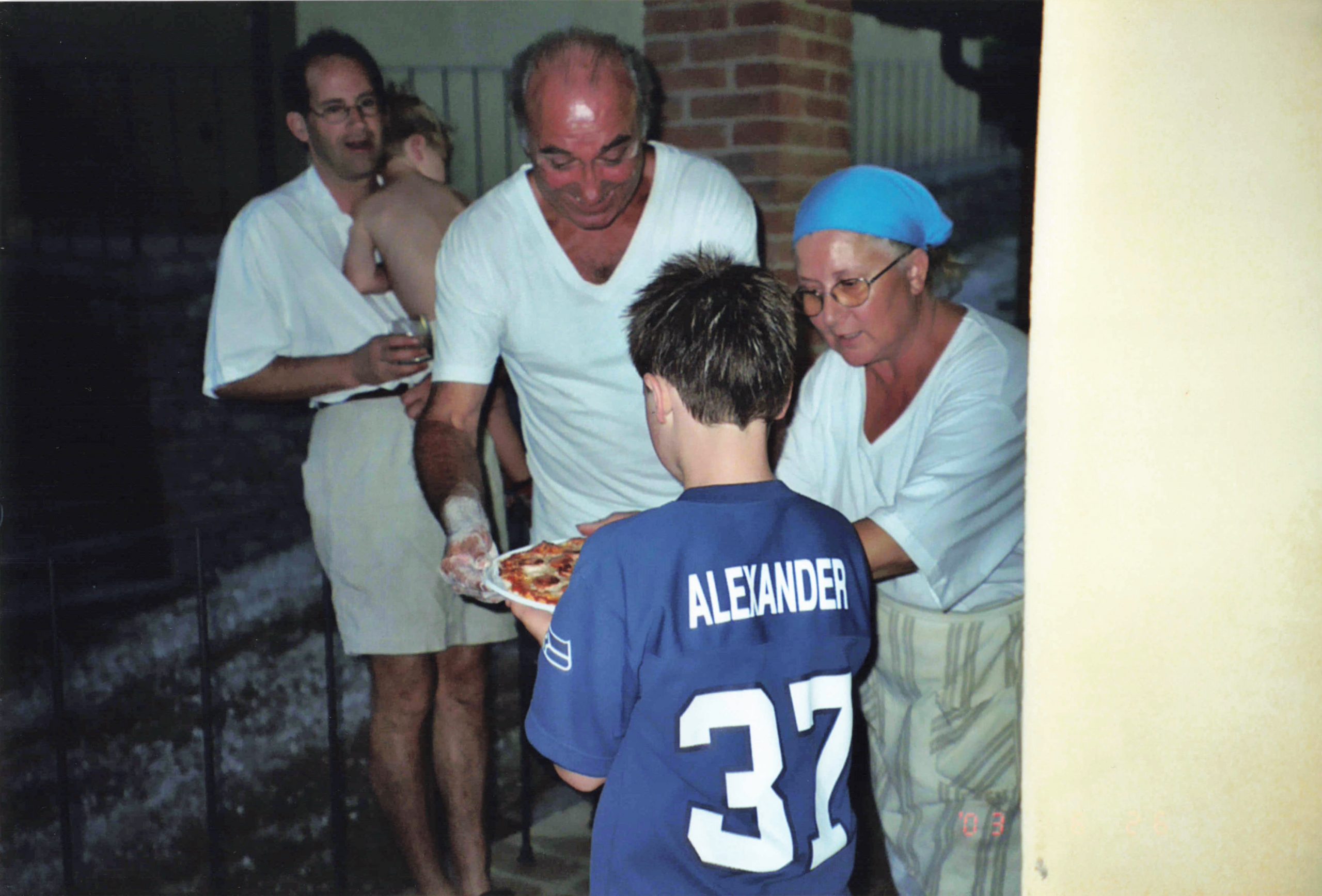
My brother being handed a pizza straight from the villa’s outdoor wood-fired stone oven.
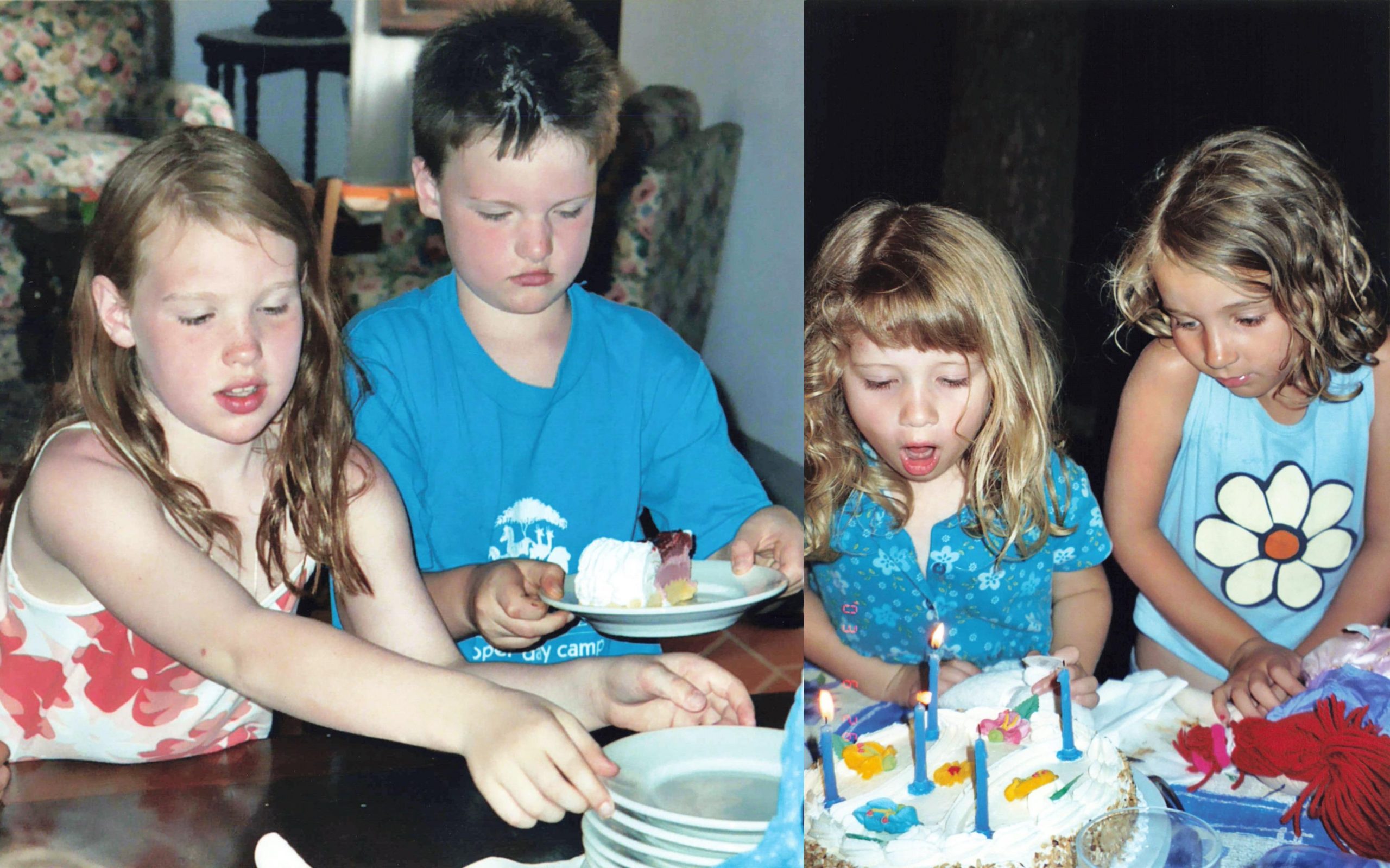
Summer birthdays at the villa.
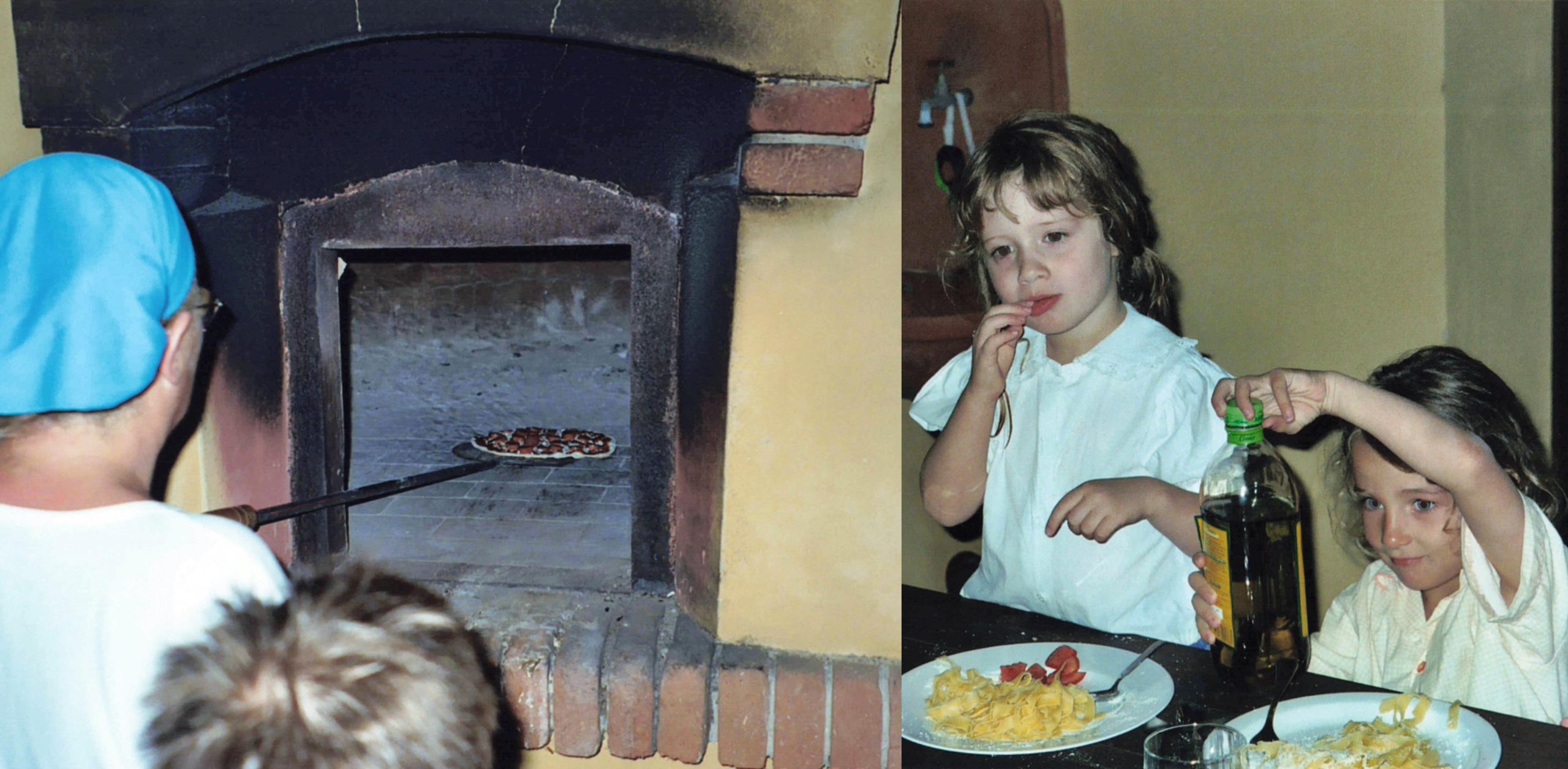
Pizza & pasta—the staples of childhood.






